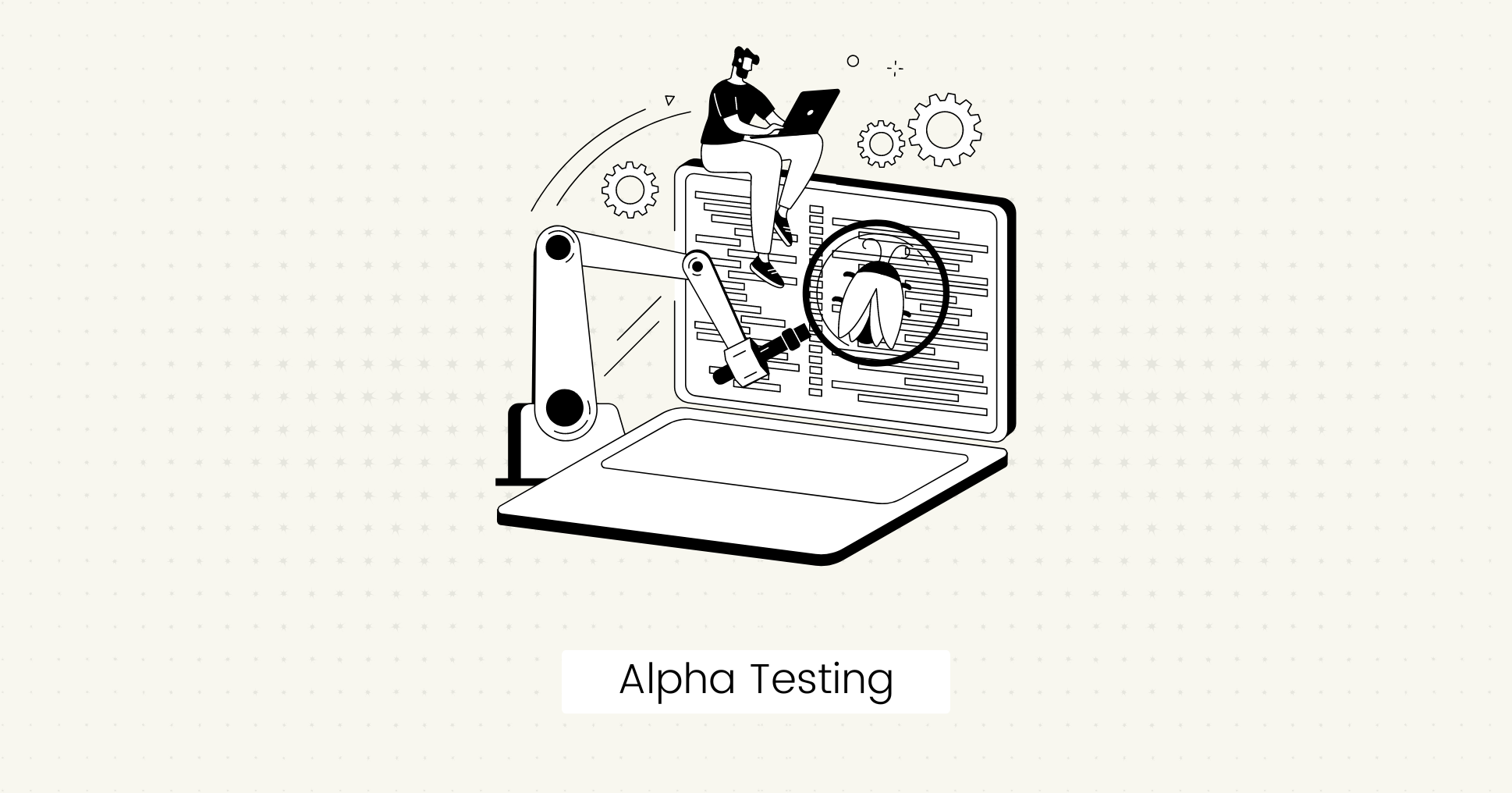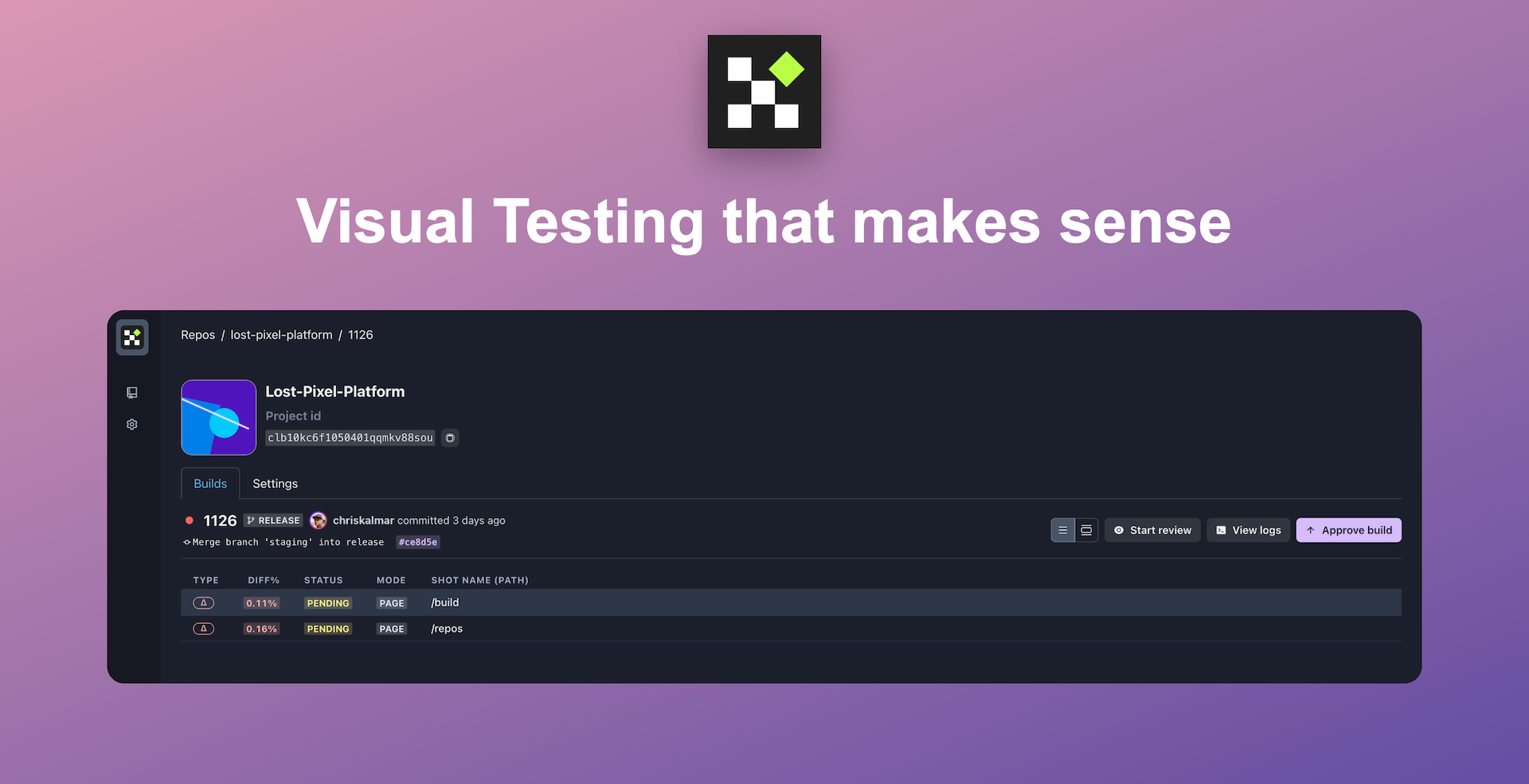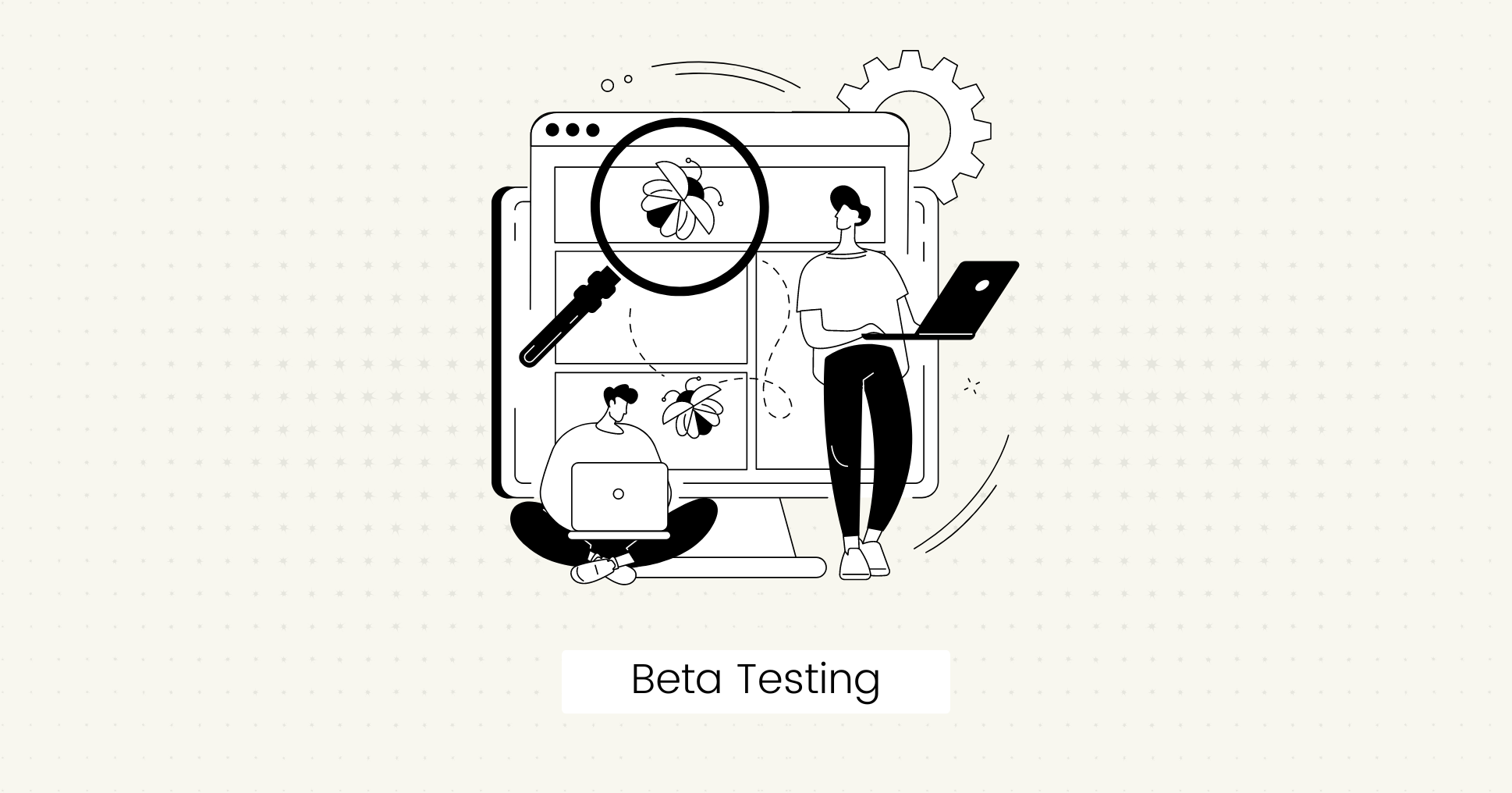Imagine you release an app without proper testing, and customers stop using it because it crashes frequently.
About 90% of people leave an app due to poor performance and bad user experience.
You might feel confident about your software, but if you skip crucial testing phases, you could face serious issues.
That's why developers and QA testers need to conduct different types of software testing throughout the software development life cycle.
Alpha and beta testing are two such types that help you catch issues before your users do.
This guide will highlight the key differences between alpha and beta testing so you know why and when you should use them.
Let's get started.
What is Alpha Testing?

Alpha testing is the first phase of testing software before it is released to users.
The in-house QA team usually conducts it to catch the most obvious bugs and issues early on.
Alpha testing uses black-and-white box testing techniques to check the system's internal design, functionality, and behavior.
Examples:
- Imagine you are testing a messaging app. During the process, you find out that individual chat functions are working correctly, but sending multimedia files causes the app to freeze. With alpha testing, you can catch this issue early and ensure the app's key features function smoothly.
- Similarly, in a mobile gaming app, alpha testing can help identify bugs, test gameplay mechanics, and catch any actions that cause the game to crash. By addressing these issues in the alpha phase, the beta testers could focus on gameplay experience rather than stability problems.

Set up visual regression tests in minutes with Lost Pixel Platform. Do not let your users find bugs first.
Importance of Alpha Testing
Alpha testing is important in the software development process because it helps identify major issues before they impact users.
This is crucial because a serious bug found later in the process is usually far more difficult to fix, leading to negative reviews that damage the brand's reputation.
Here are the key benefits of conducting alpha testing:
- Early Bug Detection: Alpha testing is done before the product goes public, so bugs are caught before they reach users.
- Core Functionality Validation: Since it is the first time the product is tested as a whole, it gives the development team confidence that the core functionality is stable and ready to be tested by external users in the beta phase.
- Improved Software Quality: Alpha testing catches major issues that could make the software unusable in real-world conditions. This makes the software ready for beta testing to improve performance and usability.
- Time and Cost Saving: Fixing issues during alpha testing is much cheaper and faster than once the product has reached beta testing or entered the market.
- Team Communication: Alpha testing is an internal process that promotes close collaboration and communication between developers and testers. Also, the feedback from alpha testing allows developers to resolve issues quickly.
Key Features of Alpha Testing
It is a form of user acceptance testing that involves testing the software with the end-user perspective in mind.
The following factors characterize alpha testing:
- Controlled Environment: It is done in a controlled test environment that closely resembles the production environment. The testers simulate real-world scenarios and use bug tracking tools to monitor bugs and performance issues.
- Multiple Cycles: It involves multiple rounds of testing, each 1 to 2 weeks long, depending on how many issues are found. Bugs found in the first phase are fixed, and then the software is tested again.
- QA Checks: The main purpose of alpha testing is to follow a quality assurance checklist to identify system stability, performance, and compatibility issues and verify that the product meets user requirements and specifications.
- Limited Access: It is limited to a small group of internal people. Only the testing team and developers get access to the product at this stage.
When Is Alpha Testing Done?
Alpha testing is performed after the product has been formally tested (functional and regression testing) but before beta testing, which involves actual users.
It is like the last line of defense to catch critical issues before the software is released.
This testing is done by internal testers who are part of the organization, the QA team, or even developers.
The goal is to have people familiar with the project look at it closely without involving external users.

Set up visual regression tests in minutes with Lost Pixel Platform. Do not let your users find bugs first.
Limitations of Alpha Testing
Despite its necessity, alpha testing poses some challenges for developers.
Such as:
- Limited Testing Scope: This testing focuses on finding major bugs. It may not fully address performance and usability issues that show up only under heavy user loads or varied environments.
- Not Real-World Conditions: Developers cannot mimic how actual users will use the software with a hundred percent accuracy. This leads to bugs going unnoticed, which can only be found in real user scenarios.
- Testing May Be Biased: The internal team that created the software conducts the testing, so the results may overlook some flaws.
Tools for Alpha Testing
There are several tools available that provide features for issue tracking, project management, and bug reporting.
Here are some popular options you can check out:
- Jira
- ReQtest
- Bugzilla
- Monday
- Backlog
What is Beta Testing?

Beta testing is the final stage of the testing lifecycle, during which the software is handed over to real users to test the product.
Unlike alpha testing, which involves professional testers, beta testing allows end users or customers to use the application freely.
The goal is to collect user feedback about their experience and improve product quality to meet user expectations.
Example:
Imagine you developed an app and performed the required testing to make sure it's functional.
Then, you encourage a selected group of users to give you feedback on the app's performance and usability.
Although the app functions correctly, users found the layout difficult to navigate.
You can use this feedback to make the UI more user-friendly and improve user satisfaction.

Set up visual regression tests in minutes with Lost Pixel Platform. Do not let your users find bugs first.
Importance of Beta Testing
Beta testing is a vital stage in the development process because it detects issues that internal testers might miss.
The feedback collected during this phase is valuable for making last-minute adjustments before the product is officially released.
Here are some benefits of conducting this type of testing:
- Test Coverage: Beta testing helps expose bugs that may have slipped through previous testing. Also, this testing provides an opportunity to test the software in different environments, devices, operating systems, and user behaviors.
- Real-World Issues: It allows external software testing under real-world conditions to test for problems like network lags, increased loads, scalability testing, cross-browser and device compatibility issues.
- Improved User Experience: Beta testing is used to see how end-users interact with the product. This allows developers to gather feedback to make the app easy to use or add helpful features before the product launch.
Key Features of Beta Testing
The beta testing process has the following characteristics:
- Real-World Environment: It involves users testing the software on their devices and networks. This can reveal performance issues or bugs that did not appear in controlled test environments.
- User Insights: Beta testing is carried out by external users who provide their unbiased opinions about the product's usability. This feedback can include bug reports, performance issues, or suggestions for improvements. It gives developers insights into how users experience the product and how they can enhance it.
- Short Duration: Based on user feedback, beta testing is usually limited to a few weeks.
- Broader Access: Beta testing can involve many external testers, ranging from a few trusted customers to thousands of users in the open beta phase.
When Is Beta Testing Done?
Beta testing takes place after alpha testing at the time of product marketing.
It is done when the software is feature-complete and stable enough for outside users but still needs feedback based on user input.
Limitations of Beta Testing
Beta testing has its own limitations, including:
- Limited Control: Beta testers are not professional testers. They might not use the product as thoroughly or overlook certain features. This results in irrelevant feedback, making it hard for developers to pinpoint the exact issue.
- Time Pressure: Beta testing is limited in time, and there may be pressure to resolve all issues before launch. The development team must prioritize which bugs to address first and which to leave for future updates.
- Security and Privacy Concerns: Beta testing is performed on user devices and environments, making it difficult to handle sensitive data and privacy.
Tools for Beta Testing
Some popular usability testing tools used for beta testing include:
- UserTesting
- Centercode
- Maze
- Hotjar

Set up visual regression tests in minutes with Lost Pixel Platform. Do not let your users find bugs first.
Final Words
Alpha testing and beta testing are both invaluable when it comes to improving software reliability and quality.
To maximize your testing efforts, you need to understand their importance in different stages of the development cycle.
FAQs
Which one should you choose: alpha or beta testing?
Choose alpha testing when you need to catch bugs and check functionality internally, and go for beta testing when you want to gather user feedback and assess usability in a live environment.
What is the difference between open beta testing and closed beta testing?
Open beta testing expands user involvement by allowing a larger group of users to test the software, while closed beta testing is limited to a select group of invited users.

About Dima Ivashchuk
Hey, I'm - Dima the co-founder of Lost Pixel. I like modern frontends, building stuff on the internet, and educating others. I am committed to building the best open-source visual regression testing platform!
